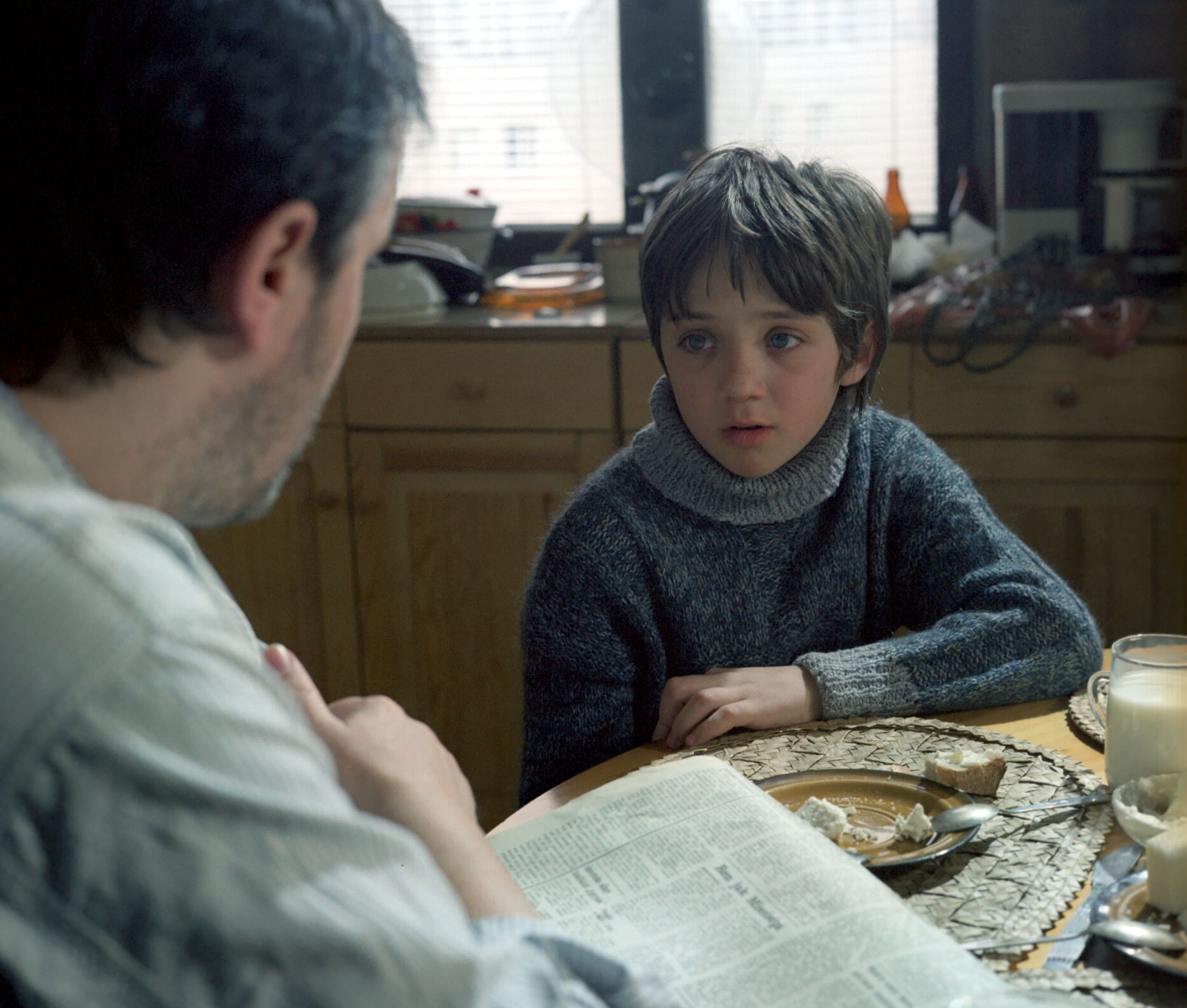
Who will save Tarkovsky? Who will save the world in our feminist times?
There are two daughters, but first allow me to explain a couple of basic terms. The Zone – an area free from the laws of physics, where death is easy to come by, but which contains incredible objects. A Stalker – someone who travels to the Zone illegally. That’s enough to begin with, back to the daughters. The first one has two fathers: the brothers Arkady and Boris Strugatsky, Russian science-fiction authors. Both are dead. Arkady, the older of the two, was an artilleryman and Japanologist; Boris was an astronomer. They always wrote together. Their speculative fiction disguised independent reflections on the present day, for which there was no room in the USSR. The greatest Soviet film-makers – Andrei Tarkovsky, Aleksei German, Alexander Sokurov – all adapted texts written by the Strugatskys. All three shared a desire to tell stories about the world in which they really lived, not a simulacrum generated by ideology. The Strugatskys’ oeuvre provided them with an opportunity to do so, as censors didn’t grasp works of fantasy – they failed to even catch as obvious an allusion as the sausages and potatoes that are eaten by the ‘American’ scientists in the novel Roadside Picnic (1972).
It is in Roadside Picnic that the first Stalker’s daughter appears; her nickname is Martyshka (in Russian, a diminutive of monkey). Like all children of Stalkers, she is born a mutant – she is covered in fur, has no pupils and can communicate with zombies (the Zone not only messes with people’s genes, it also wakes the dead). Her otherness is a kind of disease and nothing really comes of it. The second Martyshka, in Tarkovsky’s film Stalker (1979), is another thing entirely. Even though the film is an adaptation of Roadside Picnic, and the script was penned by the Strugatskys, everything is different: the humour has vanished, the Stalker is searching for something sacred, and his daughter has an important mission. I’ll return to her. Now I will say what I will not give back.
What I won’t give back
“The time is out of joint.” This sentence sounds like a pronouncement on our age, but it is just one line in Shakespeare’s Hamlet. The play about the Danish prince was written at the turn of the 16th and 17th centuries, which suggests that our experience of an unstable world is not in any way novel.
Yet some aspects of the whirlwind we find ourselves in do seem specific to contemporary life – such as the ongoing redefinition of values, a process begun by modern emancipatory movements, especially feminism. We view anything to do with the status of women in art and society differently today: signs of gender inequality, once transparent, are now stark and conspicuous. They can also ruin our once favourite books and films. Take Roman Polański’s Rosemary’s Baby: when I watch it now, I see a story about the rape of an unconscious woman, who is then ‘gaslighted’. I never used to view it that way before, I didn’t see it all – that’s how much perceptions have changed. This feminist erosion has recently begun to gnaw away at Tarkovsky’s films for me as well – issues of masculinity and femininity play out in an ultra-conservative fashion (the episcopate would approve) – and at this point, I began to seriously worry. Because say what you like, but I won’t give up Tarkovsky without a fight.
In the end…
A friend of mine likes to say that great films are made all the time, but in the end there’s no-one like Tarkovsky. This may sound radical, unfair and old-fashioned (we tend not to like hierarchies these days), but it is true. Tarkovsky’s films (Ivan’s Childhood, Andrei Rublev, Solaris, Mirror, Stalker, Nostalgia, The Sacrifice) cannot be judged by normal standards, as they are nothing less than spiritual visions. Cinema did not give us such visions before Tarkovsky, nor has it after him. One only has to watch Leviathan or Loveless by Andrei Zvyagintsev, regarded as an heir to Tarkovsky, to notice the difference: while the technique is still there, the spirit has gone. What’s going on here?
“Religion, philosophy, art – three pillars supporting the world.” Tarkovsky noted down in his journal his most significant thought, but in his hands the three pillars melted into one column.
Art was connected to the meaning of existence, which in turn lay within the realm of religion. Asked about the meaning of art, Tarkovsky said: “One has to above all try to answer a more important and general question: ‘What is the meaning of our existence?’ In my opinion, the meaning of one’s existence here on Earth is to raise oneself up spiritually. This means that art should be made in service to that cause as well […].” The path this elevation takes is set by the fullness of our faith, hope and love – a state of being that in the Gospel is symbolized by childhood. A documentary by Tarkovsky’s son about his father, titled A Cinema Prayer, premiered at the most recent Venice Film Festival, and since then has been showing to great acclaim in arthouse cinemas around the world. It is hard to think of a more fitting title, because for Tarkovsky cinema was exactly that: a prayer. In the most literal sense. Perhaps that is the je ne sais quoi that his imitators cannot replicate – an authentically spiritual work, or in other words, an inner life that sought to express itself and did so with the help of the art of film.
Tarkovsky is back, and there are more signs of this renaissance – the recent exhibition Free Flight: Andrei Tarkovsky and ‘Unofficial’ Art From The 60s to 80s at the New Tretyakov Gallery in Moscow, was on at the same time as The Coming World: Ecology As The New Politics 2030-2100 at the Garage Museum of Contemporary Art in Gorky Park. Both exhibitions, separated in space by a wide street, were intellectually connected by the subject of civilizational collapse. The polyphonic story told by the Garage show began with the Chernobyl disaster, while Stalker was the pivot at the Tretyakov (stills from the film and set photos took up the central portion of the exhibition, along with paintings by Pyotr Belenok from the 1970s that still retain their post-apocalyptic atmosphere).
A new woman
Tarkovsky said that in Stalker, he achieved the impossible: “Legally taking up the subject of transcendence,” a feat in the USSR. The film is set after an unspecified catastrophe – perhaps a nuclear holocaust, but more significant is the spiritual collapse of a highly-developed civilization. Anti-communists might have seen this as a metaphor for communism, while communists might have seen it as a metaphor for capitalism. Either way, we are watching death: of the natural environment, industry, of souls and human relations. The world is grey-brown, only the Zone entices people with its bright colours. In the Zone, the site of a meteorite crash guarded by soldiers, things occur that scientists cannot explain, many traps lie in store and people perish. There are rumours about a Room within the Zone that fulfils the most secret desires of desperate people. But the road to it is not easy, which is why Stalkers are necessary to act as guides. The Stalker in Tarkovsky’s version is a Russian holy fool, and a (inadequate) husband and father. He works for more than just money – he hopes that one day he will lead a person to the Room who will save the world. That is why he carefully picks his clients, guided by his holy fool’s instinct. A burnt-out Professor and alcoholic Writer seem worthy of the Zone to him, but after several twists and turns, it turns out that they both have hidden intentions: the Professor wants to destroy the chamber, while the Writer doesn’t believe in the fulfilment of desires. The spiritual mission ends in defeat – once again hope and faith were lacking.
This whole game, where spirituality is at stake, takes place between men. I love Stalker, so I must ask: where is there a place for me in this adventure? Only two women appear in the film: a lady in a long dress, whom the Writer wants to take to the Zone, but the Stalker refuses; and the Stalker’s wife, petrified that she will lose him and be left alone with their child. Tarkovsky shows the wife having a strange fit, similar to an epileptic one – when, despite her protestations, the Stalker sets off on another mission, the woman falls backwards and for a long time thrashes around convulsing, all the while her nipples are visible through her thin blouse. Loneliness might be the cause of her suffering, or perhaps she’s under the spell of a lustful demon – we don’t know. The second strange moment involving her: she suggests to the Stalker that she will travel to the Room and voice her desire, but he doesn’t allow it, explaining that he wouldn’t be able to bear the potential disillusionment. What we have then is a relation typical of religious conservatism: the man controls the sacrum and designates the limits of the woman’s existence (she is to be a wife and mother).
It’s hard to accept such a vision today. Fortunately, there remains the girl: the Stalker’s daughter. In the film, Martyshka is disabled from birth – she is paraplegic and cannot speak. However, in the final scene, her disabilities are unexpectedly transformed into miraculous powers: she reads a Tyutchev poem and uses telekinesis to move a glass. The girl’s muteness is shown to be a mystical silence; her physical frailty is spiritual strength. So, will she one day travel with her father to the Room and save the world? Will the daughter become a new woman, combining the best features of her mother and father, going beyond both? One can hope that without losing her ‘womanly’ earthiness, Martyshka will follow the path of spiritual development, in which Tarkovsky saw the meaning of life and art. Before that occurs, though, the Stalker’s daughter is already completing a different mission: leading Tarkovsky’s film out of the patriarchy and saving it in our feminist times.
Translated from the Polish by Marek Maj








